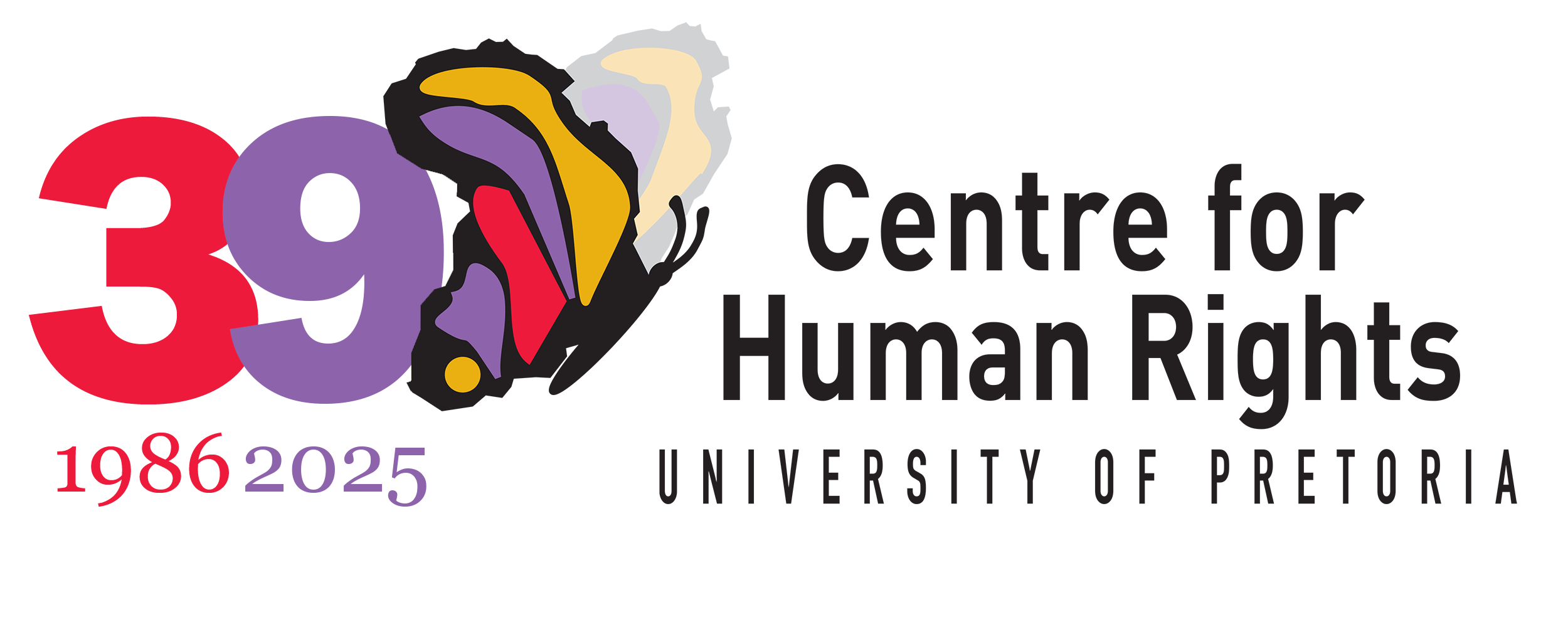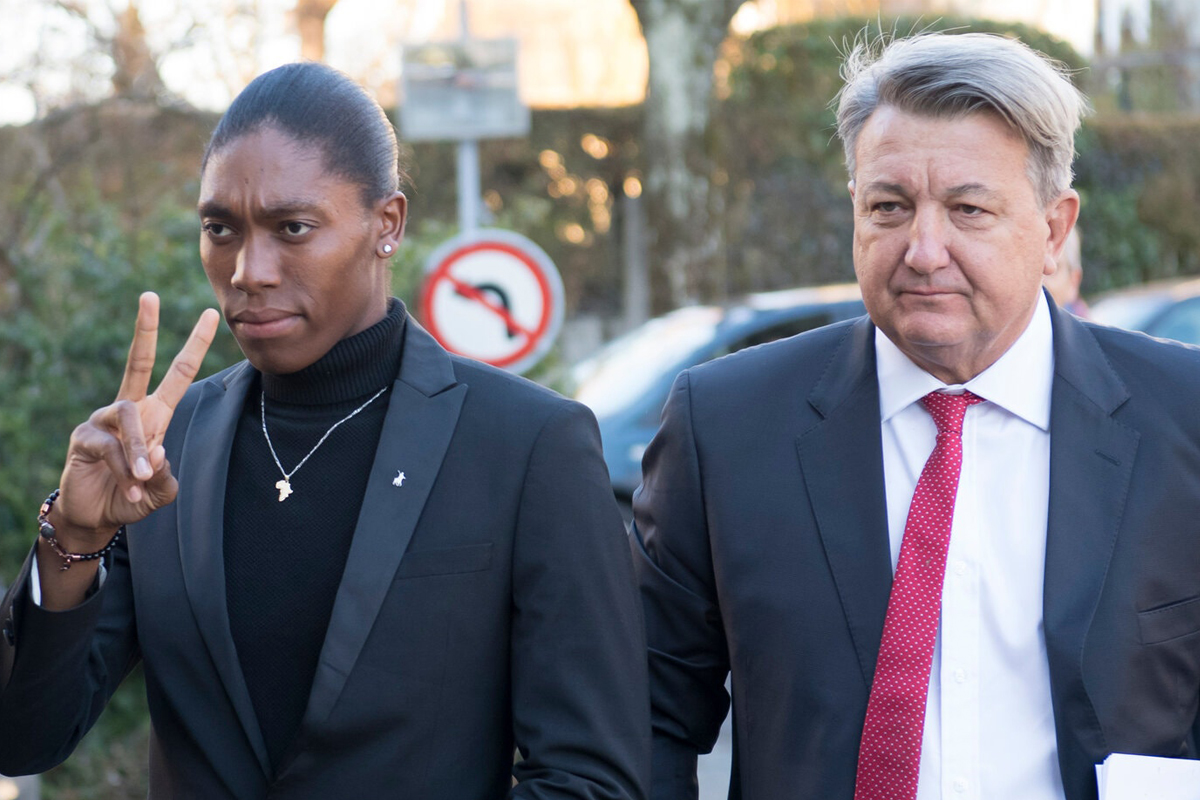Background
In April 2018, the International Association of Athletics Federations (IAAF) issued Eligibility Regulations on Female Classification (Athlete with Differences of Sexual Development) for events from 400m to the mile, including the 400m, hurdles, 800m and 1 500m event.
Caster Semenya unsuccessfully challenged these Regulations at the Court of Arbitration for Sport (CAS). The CAS, based in Lausanne, Switzerland, is a private legal person under Swiss law. Its arbitration awards are subject to the appellate jurisdiction of the Swiss Federal Supreme Court. Caster Semenya’s case at the CAS was on 30 April 2019 dismissed on the basis that “the regulations are discriminatory but that, on the basis of the evidence submitted by the parties, such discrimination is a necessary, reasonable and proportionate means of achieving the legitimate objective of ensuring fair competition in female athletics in certain events and protecting the “protected class”.[1] While the heads of arguments and application presented by Caster Semenya’s legal team at the CAS are not available on record, a summary of the application is included in the decision of the case.[2] The application encompassed both scientific and human rights-based arguments.
Caster Semenya’s appealed against the finding of the CAS to the Swiss Federal Supreme Court. After initially suspending the Regulations,[3] the Swiss Supreme Court later reversed its position, allowing the Regulations to remain in force.[4] The Court’s decision on the merits of the case is still pending.
Anticipating an adverse finding (a decision by the Swiss Federal Supreme Court that confirms the CAS finding), two main avenues to muster international pressure under international human rights law present themselves: (a) within the Council of Europe (CoE), and (b) within the United Nations (UN).
Download Caster Semenya Case Translation
Council of Europe: Submitting the case to the European Court for Human Rights
Switzerland is a member of the CoE, and is a state party to the main human rights treaty within the framework of the CoE, the European Convention for the Protection of Human and Fundamental Freedoms (European Convention). The European Court of Human Rights (European Court) adjudicates on alleged violations of this Convention.
Procedurally, this would likely be successful: A case may be submitted to the European Court against a state party to the Convention only once ‘domestic remedies’ have been exhausted in that state. An adverse decision of the Swiss Federal Supreme Court will, on this basis, allow this matter to be submitted to the European Court. The European Court had previously found Switzerland in violation of the European Convention in respect of a decision of the Swiss Supreme Court that refused to set aside a finding of the CAS (on a different matter).
Substantively, a strong argument can be made, but success is not guaranteed: Arguments could be based on the violation of human rights provisions (with support of scientific evidence) that are provided for under the European Convention. Relevant rights include: Article 3 on the freedom not to be subjected to torture, inhumane or degrading treatment; Article 14 on non-discrimination; and Article 8, which provides for the right to ‘private life’, stipulating that any limitation to that rights must be shown to be ‘necessary in a democratic society’ for the protection of the rights and freedoms of others.[6] The European Court has interpreted the right to private life as guaranteeing physical, moral, and psychological integrity. With respect to physical integrity, the Regulations arguably do not respect the principles of informed consent in that Caster Semenya felt coerced into unnecessary tests and treatment in order to continue competing. The onus for justifying the necessity of a limitation will lie on the Switzerland.
In deciding the Caster Semenya case, the European Court is likely to recognise the relevance of its “private life”-jurisprudence, and could take a strong position against discrimination based on gender stereotyping. However, it should be taken into account that the European Court has under similar circumstances frequently invoked the “margin of appreciation”. Under this doctrine, the European Court defers to the judgment of national institutions (including courts), especially when there is a lack of “European consensus” on the substantive issue under consideration. If it adopts this approach in the present case, the European Court will not find Switzerland in violation of the European Convention.
United Nations human rights system
Under the UN human rights system, there are two broad options: the more politicised arena of the Human Rights Council; and the quasi-judicial fora of the UN human rights treaty bodies.
UN Human Rights Council
The UN Human Rights Council is the most prominent forum for the discussion of human rights issues within the UN. The one procedure in which all states participate is the Universal Periodic Review (UPR). During the UPR review, fellow state representatives every five years assess the totality of a state’s human rights record. Switzerland’s last UPR was in 2017, in a cycle which ends in 2022. This means that the UPR would not, for now, be an option for raising Caster Semenya’s case, as Switzerland will only be assessed again after 2022.
The UN’s human rights special mechanisms, established under the UN Charter, report to the Human Rights Council. In September 2018, three of these mandate holders, the Special Rapporteur on the right of everyone to the enjoyment of the highest attainable standard of physical and mental health; the Special Rapporteur on torture and other cruel, inhuman or degrading treatment or punishment; and the Working Group on the issue of discrimination against women in law and in practice have written an open letter to the IAAF, condemning the IAAF Regulations for violating the right to equality and non-discrimination, the right to the highest attainable standard of physical and mental health, the right to physical and bodily integrity and the right to freedom from torture, and other cruel, inhuman or degrading treatment and harmful practices.[7]
The mandates expressed the view that that ‘[s]cientific concerns cannot take precedence over concerns about the enjoyment of human rights or human rights violations. While the regulations state that they are not intended “as any kind of judgment on or questioning of the sex or the gender identity of any athlete”, the reality is that they specifically exclude a category of women from competing as women in specific IAAF regulated sports events based on their natural physical and biological traits. The regulations reinforce negative stereotypes and stigma that women in the targeted category are not women – and that they either need to be “fixed” through medically unnecessary treatment with negative health impacts – or compete with men, or compete in “any applicable intersex or a similar classification. The letter also called for “information on measures taken by the IAAF to ensure that elite women athletes with differences of sex development who compete in the events targeted by these regulations will not be coerced as a result of these regulations into undergoing stigmatising and intrusive examinations, being subjected to medically unnecessary treatment with harmful impacts on their physical and mental well-being, or abandoning the possibility to compete in line with their gender in restricted events”.[8]
The UN Human Rights Council is also a space for debate, often resulting in the adoption of resolutions. In the eve of the CAS delivering its decision, in March 2019, the Human Rights Council adopted a resolution, titled “Elimination of discrimination against women and girls in sport”,[9] in which it called on all UN member states to “ensure that sporting associations and bodies implement policies and practices in accordance with international human rights norms and standards, and refrain from developing and enforcing policies and practices that force, coerce or otherwise pressure women and girl athletes into undergoing unnecessary, humiliating and harmful medical procedures in order to participate in women’s events in competitive sports, and to repeal rules, policies and practices that negate their rights to bodily integrity and autonomy”. South Africa co-sponsored this resolution,[10] which was adopted unanimously.
UN human rights treaties
The UN system has a number of treaty bodies that can be approached to consider the Caster Semenya matter and broadly the issue of hyperandrogenic women in sports. UN treaty bodies that receive individual communications and can consider the case, include the ((i) the Committee on the Elimination of Racial Discrimination (CERD Committee), which monitors the implementation of the Convention on the Elimination of All Forms of Racial Discrimination; (ii) Committee on Elimination of Discrimination against Women (CEDAW Committee), which monitors implementation of the Convention on the Elimination of All Forms of Discrimination against Women and its optional protocol; (iii) the Committee against Torture (CAT Committee), which monitors the implementation of the Convention against Torture and Other Cruel, or Degrading Treatment and; (iv) the Committee on Economic, Social and Cultural Rights (ESCR Committee), which monitors the implementation of the International Covenant on Economic, Social and Cultural Right (ICESCR); and (v) the Human Rights Committee, which monitors the implementation of the International Covenant and Cultural and Political Rights (ICCPR). Each of these treaties has provisions on which relevant arguments may be based.
Treaty bodies may examine individual communications (complaints) in respect of state parties that allow for such a process, which is optional. While Switzerland has accepted a number of individual complaints mechanisms, it has not done so in respect of the complaint mechanism under two of the treaties most suited to address the issue at hand, namely, the ICCPR and ICESCR. This possibilities are thus limited. These findings are also non-binding and the process to finalise such complaints is protracted.
Treaty bodies may also examine state-to-state communications (complaints) in respect of state parties that allow for such a process, which is optional. Switzerland and South Africa have both accepted the state-to-state procedure under CAT. South Africa would therefore be able to submit a complaint against Switzerland that the CAS decision, as confirmed by the Swiss Federal Supreme Court, amounts to degrading treatment of Caster Semenya, and is thus a violation of CAT. Switzerland has not accepted the other state-to-state mechanisms. Under article 22 of CERD, article 29 of CEDAW and article 30 of CAT, a process of arbitration between states is allowed for, with the possibility of approaching the International Court of Justice if attempts at arbitration fails.
Treaty bodies also regularly (every few years) examine periodic state reports and issue Concluding Observations. So far, none of these Concluding Observations concerning Switzerland addressed this issue. Although most of them predate the regulations, at least the most recent, examination by the under the ICESCR in 2019, could have – but did not – make reference to this issue. A number of reports are upcoming, and provide opportunities for raising this issue. This could be done by way of submitting alternative reports, or lobbying members of the treaty bodies to pose relevant questions to the state delegation. The next reports due are under the CAT and CERD.
Conclusion: Three main options – that may also be employed complementary to each other are possible
- The first is quasi-judicial in nature: attempting to secure a finding by a UN human rights treaty body in respect of an Individual communication, or in a Concluding Observation emanating from the examination of state report. However, these findings are not binding, and the process is quite protracted.
- The second one is judicial in nature: a case submitted for a decision by the European Court of Human Rights. The decisions of this Court are binding and they are mostly effectively implemented. Although this provides a clear possibility of success, this is by no means guaranteed. However, even a loss may generate much publicity and interest and may be pivotal in garnering support.
- The third is diplomatic-political in nature: leveraging the UN Special Procedures; resolutions of the UN Human Rights Council; and the UPR. These have to a some extent already been used, and could be further explored. The South African government could take up the issue again in the Human Rights Council, and can raise the issues. However, the UPR does not at this time provide a possibility.
Advocacy
An advocacy strategy has to complement any possible use of the options discussed above. Advocacy should involve a wide array of actors, and should take cognisance of the preferred approach of Caster Semenya herself. Advocacy should be based on UN Human Rights Council Resolution 40/5.
Advocacy should involve other sports associations/ federations based in Switzerland (and elsewhere), such as the International Football Federation (FIFA). In this respect, the advocacy could be embedded in a wider concern for adherence to human rights in the administration of sport.
Collaboration /Networking
International collaborative networks should be established between civil society actors in South Africa and Switzerland. An example would be collaboration – informal or formalised – between the Centre for Human Rights, and the Sports Law Centre, Faculty of Law, University of Pretoria; the Centre for Sport and Human Rights, based in Geneva;[11] and the South African Human Rights Commission, as well as the Commission for Gender Equality. The Centre for Sport and Human Rights has already emphasised the potential role of national human rights institutions,[12] and has worked with them in advancing human rights in sports. The International Centre for Sports Studies (CIES) at the University of Neuchâtel in Switzerland may also be included in this partnership.
Centre for Human Rights, Faculty of Law, University of Pretoria
2020-04-30
[1] Available here https://www.tas-cas.org/fileadmin/user_upload/CAS_Executive_Summary__5794_.pdf The full decision is available on https://www.tas-cas.org/fileadmin/user_upload/CAS_Award_-_redacted_- _Semenya_ASA_IAAF.pdf.
[2] See Para 50-87.
[3] Press statement of the Swiss Supreme Court. https://www.bger.ch/files/live/sites/bger/files/pdf/en/4A_248_2019_yyyy_mm_dd_T_e_09_54_21.pdf
[4] As above.
[5] October 2018 decision ECtHR, Mutu and Pechstein v Switzerland, applications no. 40575/10 and no. 67474/10, ECLI:CE:ECHR:2018:1002JUD004057510, alleging breaches of Article 6 of the European Convention on Human Rights.
[6] However other human rights such as the right to health, and the right to physical and bodily integrity are not provided for under the Convention
[7] https://www.ohchr.org/Documents/Issues/Health/Letter_IAAF_Sept2018.pdf.
[8] Para 5 of recommendations.
[9] Resolution 40/5, 21 March 2019; see https://www.right-docs.org/doc/a-hrc-res-40-5/
[10] Together with Eswatini, Mozambique, Zambia and Zimbabwe.
[11] See https://www.sporthumanrights.org/
[12] See eg https://www.sporthumanrights.org/en/resources/kigali-2019-important-progress-in-advancing-human-rights


